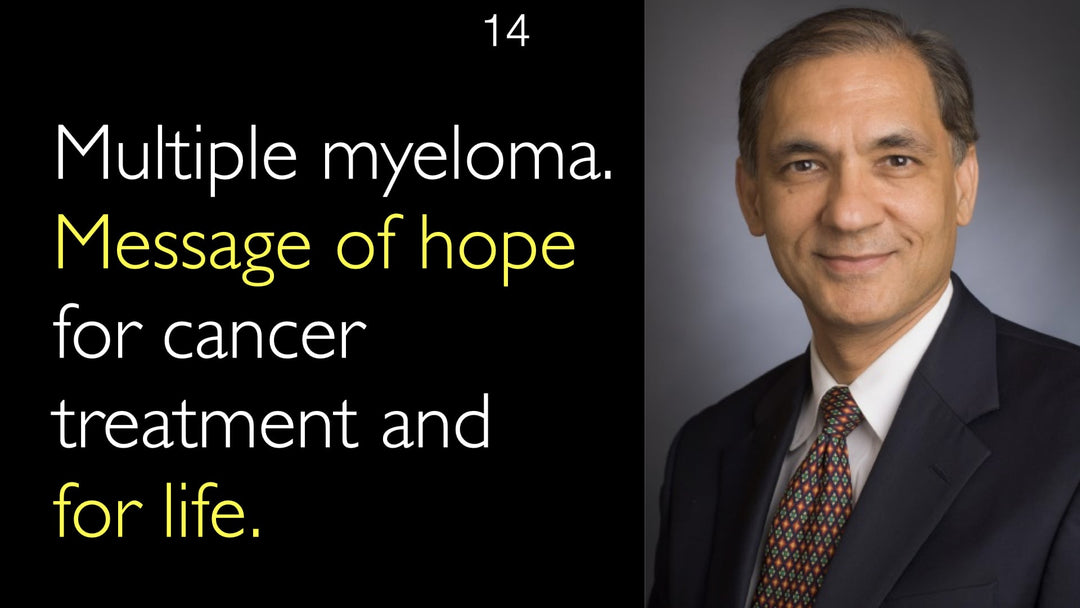מומחה מוביל בנוירולוגיה וטרשת נפוצה, ד"ר פול מתיוס, MD, מסביר כיצד רפואה מרובדת משפרת את הטיפול. הוא מפרט כיצד חלוקת חולים לפי מאפייני מחלה ופרוגנוזה מיידעת בחירות טיפוליות. ד"ר פול מתיוס, MD, דן במעבר מרפואה מרובדת לרפואה מותאמת אישית מדויקת. הוא מתאר את השימוש בבדיקות קליניות ו-MRI (דימות תהודה מגנטית) למעקב אחר פעילות המחלה ולהתאמת הטיפול עבור חולים בודדים.
אופטימיזציה של הטיפול בטרשת נפוצה באמצעות רפואה מרובדת ורפואה מותאמת אישית
קפיצה לפרק
- רפואה מרובדת - הסבר
- חשיבות בטרשת נפוצה
- תת-קבוצות קליניות ופרוגנוזה
- ייעול החלטות טיפול
- רפואה מותאמת אישית
- ניטור פעילות המחלה
- תמלול מלא
רפואה מרובדת - הסבר
ד"ר פול מתיוס, MD, מגדיר רפואה מרובדת כגישה קלינית המכירה בהטרוגניות בין מטופלים. הוא מסביר שלא כל המטופלים עם אבחנה משותפת זהים. במקום זאת, קיימות תת-קבוצות נפרדות בתוך קטגוריה אבחנתית רחבה יותר. תת-קבוצות אלה חולקות מאפייני מחלה והתנהגויות קליניות דומות.
מושג זה קריטי למעבר ממודל טיפול אחיד. הוא מאפשר לרופאים לסווג מטופלים בצורה מדויקת יותר. זה מוביל לחיזוי טוב יותר של מהלך המחלה ותגובה לטיפול.
חשיבות בטרשת נפוצה
יישום הרפואה המרובדת חשוב במיוחד בטרשת נפוצה. ד"ר פול מתיוס, MD, מבהיר שטרשת נפוצה היא תסמונת, לא מחלה בודדת עם גורם סיבתי מדויק. השונות המובנית הזו意味着משמעותה שמטופלים חווים מסלולי מחלה שונים מאוד. תגובותיהם לתרופות הזמינות יכולות גם הן להשתנות משמעותית.
ד"ר אנטון טיטוב, MD, דן בכך עם ד"ר מתיוס, ומדגיש את תפקידה בשיפור הטיפול הקליני. הבנת הבדלים אלה היא הצעד הראשוןtowardאופטימיזציה של הטיפול. זה עוזר לאזן בין יתרונות הטיפול לסיכונים הפוטנציאליים שלו עבור כל תת-קבוצה של מטופלים.
תת-קבוצות קליניות ופרוגנוזה
ד"ר פול מתיוס, MD, מזהה שלוש תת-קבוצות פרוגנוסטיות רחבות בטרשת נפוצה. קבוצה קטנה של מטופלים עשויה להראות התקדמות מחלה איטית מאוד even without treatmentגם ללא טיפול. קבוצה קטנה נוספת חווה מהלך מחלה אגרסיבי מאוד, או ממאיר.
הקבוצה הגדולה ביותר של מטופלים נמצאת בקטגוריה בינונית. שיוך אבחנה חדשה לאחת מתת-קבוצות אלה הוא צעד מוקדם קריטי. ריבוד זה מספק מידע יקר ערך על הפרוגנוזה העתידית הצפויה של המטופל. זה מהווה את הבסיס לכל הדיונים וההחלטות הטיפוליים הבאים.
ייעול החלטות טיפול
רפואה מרובדת מיידעת ישירות בחירות טיפול ראשוניות לטרשת נפוצה. ד"ר פול מתיוס, MD, מסביר כיצד שיוך לתת-קבוצה מנחה את בחירת הטיפול. עבור מטופלים בתת-קבוצה שפירה יותר, ההחלטה עשויה להיות ניטור without immediate treatmentללא טיפול מיידי. עבור אלה עם סיכון גבוה יותר להתקדמות, התחלת טיפול דחופה יותר.
גישה זו גם משפיעה על הבחירה between first-line medications and higher-efficacy drugsבין תרופות קו ראשון לתרופות בעלות efficacy גבוה יותר. תרופות עם potency גדולה יותר נושאות often carryסיכון גבוה יותר לתופעות לוואי. ריבוד helps ensureעוזר להבטיח שהיתרונות הפוטנציאליים של טיפול stronger justifyאת הסיכונים שלו עבור אותה קבוצת מטופלים ספציפית.
רפואה מותאמת אישית
ד"ר פול מתיוס, MD, מתאר רפואה מותאמת אישית as the next evolution after stratificationכהתפתחות הבאה afterריבוד. בעוד שרפואה מרובדת מגדירה קבוצות, רפואה מותאמת אישית מתמקדת במטופל הבודד. היא aims to understandמנסה להבין how one specific person is responding to their current treatment protocolכיצד אדם ספציפי מגיב לפרוטוקול הטיפול הנוכחי שלו.
המטרה היא לזהות את התרופה המתאימה ביותר עבור אותו individual. ד"ר אנטון טיטוב, MD, וד"ר מתיוס דנים בגישה מותאמת זו. היא מייצגת את standard of careהסטנדרט הגבוה ביותר של טיפול, moving from group-based predictions to truly individualized therapyעוברת מחיזויים מבוססי-קבוצה לטיפול trulyמותאם אישית.
ניטור פעילות המחלה עם כלים
יישום רפואה מותאמת אישית requires careful monitoring of multiple sclerosis disease activityדורש ניטור קפדני של פעילות מחלת הטרשת הנפוצה. ד"ר פול מתיוס, MD, מתאר את הכלים המרכזיים used in clinical practiceהנמצאים בשימוש קליני. רופאים עוקבים after clinical measures like relapse rates and disability progression over timeאחר מדדים קליניים כמו שיעורי הישנות והתקדמות נכות over time.
Neuroimaging imagingעצבי הוא אבן פינה בניטור. סריקות MRI משמשות למדידת פעילות המחלה, such as counting new T2 hyperintense lesionsכמו ספירת נגעים T2 היפראינטנסיביים חדשים. MRI is also critical for assessing brain volume change, a marker of neurodegeneration. הערכה מתמשכת זו allows clinicians to adjust treatment based on real-world evidence of its effectiveness for that individualמאפשרת לרופאים להתאים את הטיפול based onעל סמך evidence real-worldליעילותו עבור אותו individual.
תמלול מלא
ד"ר אנטון טיטוב, MD: טיפול במחלות נוירולוגיות הוא very costlyיקר מאוד and often is not as efficient as it can beולעיתים קרובות אינו efficientכפי שיכול להיות. You have advanced the concept of "Stratified Medicine" to improve quality of clinical care for patients with neurological disease. קידמת את המושג "רפואה מרובדת" כדי לשפר את איכות הטיפול הקליני עבור מטופלים עם מחלות נוירולוגיות. What is the Stratified Medicine concept? How does it help in clinical treatment of neurological diseases, including multiple sclerosis?מהו מושג הרפואה המרובדת? כיצד הוא helpsבטיפול הקליני במחלות נוירולוגיות, כולל טרשת נפוצה?
ד"ר פול מתיוס, MD: המושג של רפואה מרובדת is that all patients are not similarהוא שלא כל המטופלים דומים. Some groups of patients who carry a common diagnosis may behave in a more similar fashion to each other than they do to the group as a whole. There are distinct subgroups of patients with similar disease characteristics within a larger umbrella diagnostic group.
In the context of multiple sclerosis, it is a particularly important idea because multiple sclerosis itself is a syndrome. It is not a specific diagnosis established on the basis of a very precisely recognized common disease-causative factor.
The importance of stratified medicine in disease in general is this: patients with different forms of expression of a syndrome or disease may behave differently with respect to treatments. Patients may also have different prognosis and results of treatment.
Being able to express the difference in results of treatment is important. Patients must balance the benefits and risks of treatment or no treatment. Every patient belongs to such distinct subgroup with similar characteristics of clinical course and prognosis.
Several subgroups form a larger group within a given disease entity. Understanding the subgroup an individual belongs to is important in guiding therapy for other reasons too.
Here is a specific example of Stratified Medicine in the context of multiple sclerosis. We know that there exists a small group of patients with multiple sclerosis who may not show very rapid progression at all, even if we do not treat them.
Then there is another group of patients with multiple sclerosis, also relatively small, who will show very malignant progression. Finally, there are many patients with multiple sclerosis who belong to a middle group.
After initial diagnosis of multiple sclerosis, we can assign patients to appropriate subgroup. This helps to inform clinical decisions regarding initial treatment of multiple sclerosis. This helps patients to make the decision whether to start treatment or not immediately.
ד"ר אנטון טיטוב, MD: Assignment to distinct clinical group helps to make the choice of first treatment.
ד"ר פול מתיוס, MD: We can use a traditional first-line medication for multiple sclerosis, or we can use medications with a higher efficacy but also with a higher risk profile. All can be informed by that initial decision to assign a patient to a specific clinical group.
This is the Stratified Medicine concept. Personalized Medicine is taking Stratified Medicine one step further. Stratified Medicine tells us about the following classification of patients: “This class of patients with a given diagnosis are more similar. We can have these general expectations for behavior of disease in that group of patients”.
Personalized Medicine is about trying to individualize this understanding of disease course and prognosis more precisely. Precision medicine helps us to understand how a single given patient is responding or not responding to medication or to a treatment protocol.
ד"ר אנטון טיטוב, MD: Precision medicine helps us to identify medication that would be most appropriate for that person individually.
ד"ר פול מתיוס, MD: Here is the best way we can use today a Stratified Medicine and Precision Medicine for patients with multiple sclerosis. We can carefully observe patients on-treatment or off-treatment.
We can follow patients serially with clinical measures of relapse rate and disability progression of multiple sclerosis. We can use MRI imaging to measure multiple sclerosis activity. We can follow, for example, T2 hyperintense lesion count. We can identify brain volume change on MRI.
We can assess patients who have evidence for no multiple sclerosis disease progression. We can identify patients who have evidence for modest disease activity in multiple sclerosis. We can also find those patients who have evidence for higher multiple sclerosis disease activity.
That is how we can change whatever our initial treatment structure is. We can adjust and tailor treatment protocols to individual patients. Treatment becomes most appropriate for that individual patient with multiple sclerosis.
ד"ר אנטון טיטוב, MD: That is stratified medicine. It is identifying groups of patients with similar disease characteristics and prognosis. Personalized medicine is trying to individualize treatment for a single person with multiple sclerosis.








